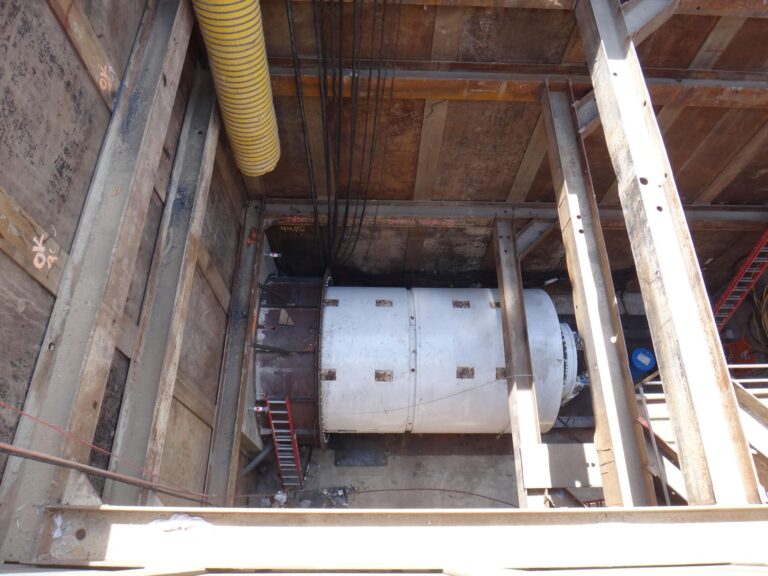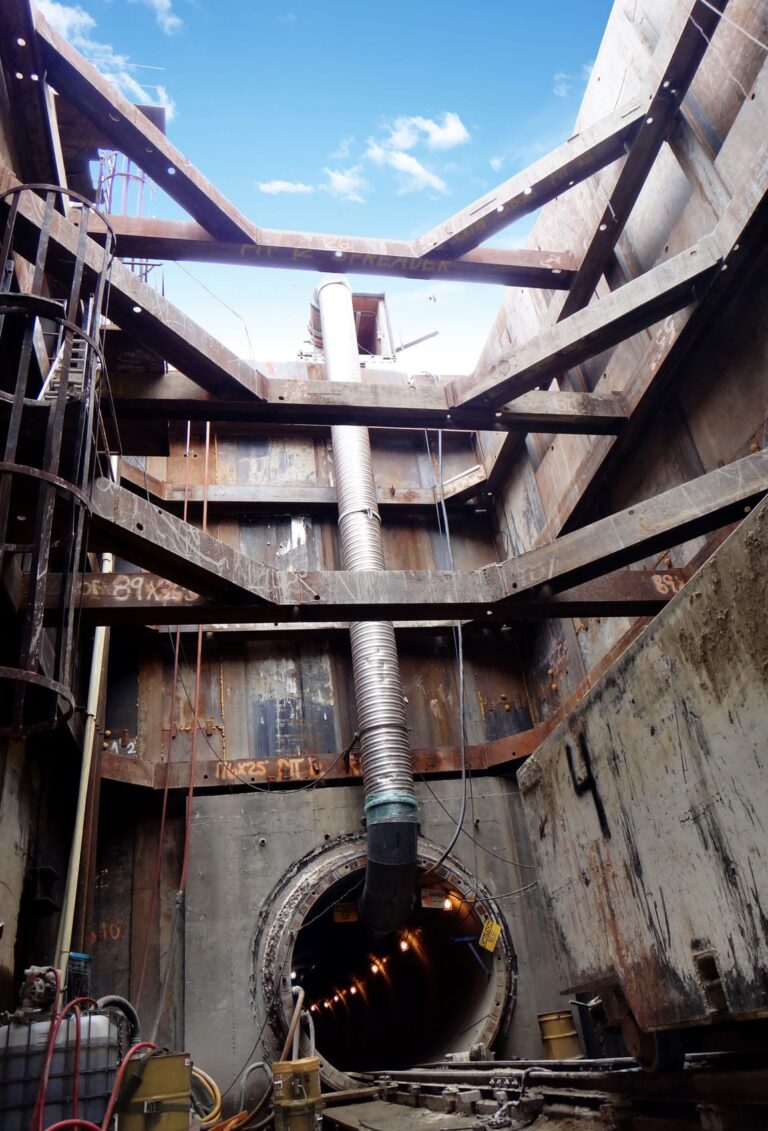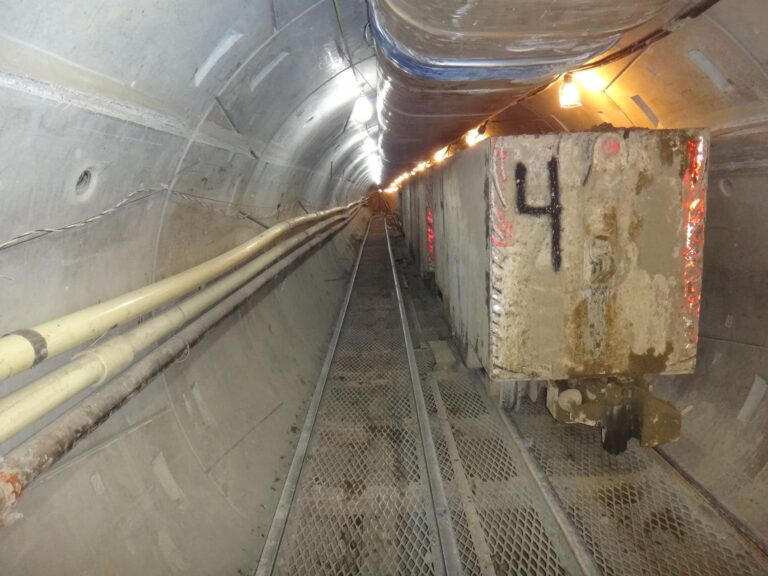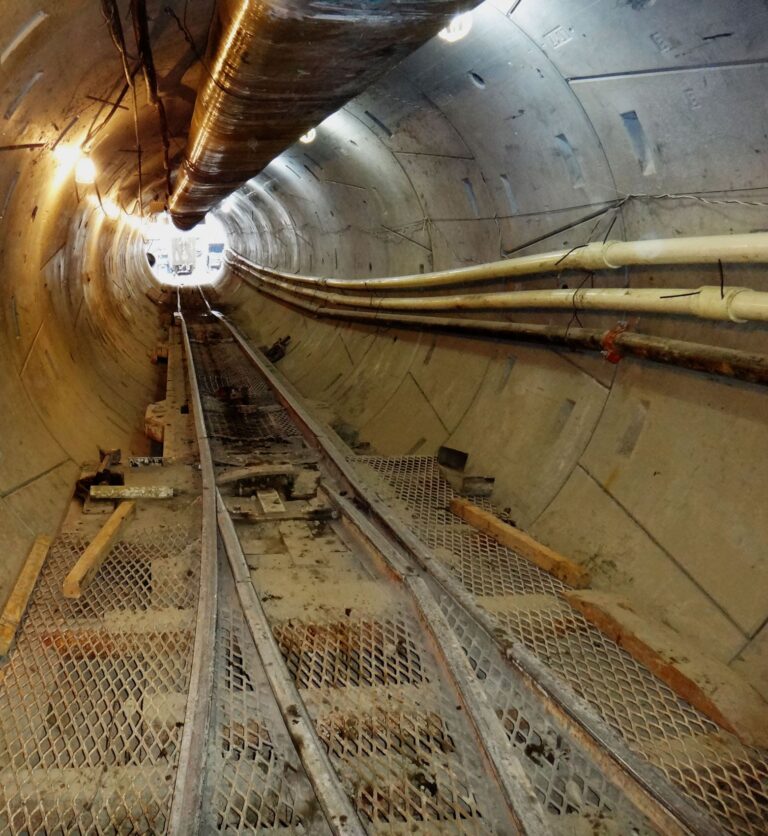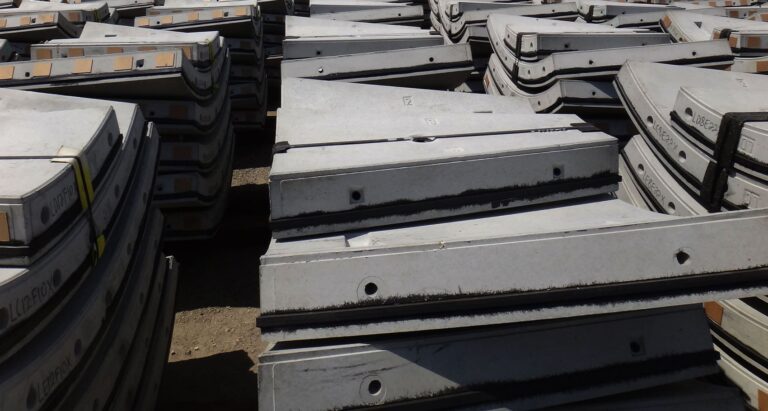Project At-a-Glance
- Tunneling of approximately 10,300 feet of 10-foot diameter tunnel via EPB-TBM
- Dense coarse alluvium with cobbles with possible boulders within tunnel envelope
- Potential for running ground conditions within tunnel envelope
- Project corridor is within a densely populated urban setting
- Pre-cast segmental tunnel liner design by Brierley Associates
Project Narrative
Completion of the River Supply Conduit project, comprised of about 15,660-ft of 78-in diameter water pipe, was an essential connection between a new four-megawatt hydroelectric generating station and new Headworks Reservoirs. Unit 5 of the project consists of approximately 3,800-ft of pipe and Unit 6 consists of approximately 11,860-ft of pipe.
Almost 10,300-ft of the pipeline was tunneled using a 10-ft diameter Lovat earth-pressure balance tunnel boring machine (EPB TBM). Depth of the tunnels ranged from about 35-ft to 45-ft deep and each alignment was above the groundwater table. Subsurface conditions above the tunnel crown consist of fill and alluvium. Within the tunnel, envelope soils are medium dense to dense coarse alluvium with cobbles and possible boulders. Given the granular nature of the soils and the absence of cohesion, running ground conditions were expected.
Brierley Associates, retained as tunnel contractor’s engineer, designed the precast, steel fiber reinforced concrete liner segments to support the tunnel before the carrier pipe was installed. The segmental liner was 9-ft diameter, 7.5-in thick, gasketed with bolts on the longitudinal joints and dowels on the radial joints. The running ground conditions and relatively low ground cover posed a risk for ground settlement in the urban environment. Brierley Associates worked with the tunnel contractor to select the EPB-TBM. Additionally, Brierley Associates designed the EPB-TBM launch frame and gasket system as well as the break-out structure; completed EPB-TBM performance evaluation relative to settlement analysis and contact grouting during tunneling; analyzed EPB-TBM face pressures to limit settlement; and carrier pipe backfill grouting design.

